I met Tsutomu Matano, the renowned car designer known as one of the fathers of the Mazda MX-5 Miata, in San Francisco just over a year ago. You may know him as Tom. It was June 2024, and I was at a Mazda event with my husband, driving a new Miata from the ND3 generation. My friend Jake Stumph, a Miata enthusiast and Mazda representative who hosted a small group to drive the ND3, invited Tom to have dinner with us. The group was about eight people, and we’d all been around each other for about a day — thus, we had a casual rapport. If someone new gets introduced to a group like that, I plan ways to make sure they’re included in the conversation. When I heard Tom was on the way, I did that for him too.
When Tom arrived, I realized my plans were for nothing. He walked into the restaurant with a huge smile and pencil-straight posture, commanding the table and making everyone laugh. Unlike most people, he didn’t need help in an unfamiliar group. He was a star in every sky.
Tom was born in Japan in October 1947. He spent his life and career all over the world, including large portions in the United States. Among so many other things, Tom is renowned for his design work on the original Miata and the FD-generation Mazda RX-7, both of which remain staples of car culture and the automotive industry. He had both in his garage at home.
The Miata Concept
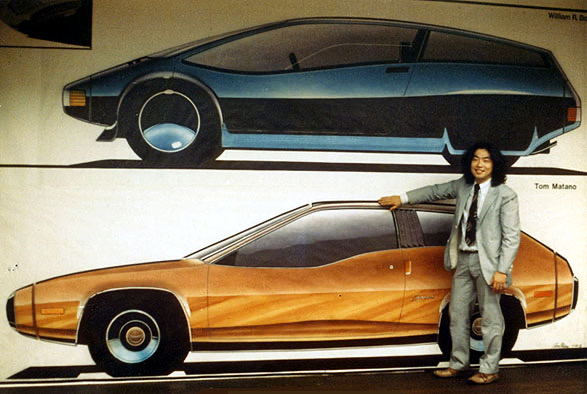
But Tom’s work on the Miata went far past the design of the car. He studied the American market to create the perfect sports car for it, setting the Miata’s tone and personality to become what it is today: one of the biggest icons in the automotive industry. His pillars of the car included, as quoted from his 1986 “Miata Concept” document:
- “I would like to see that Mazda’s image for the ‘90s, starting from the [Miata], will be recognized as a quality car that has great, fun-to-drive personality and has a cheerful character.”
- “Various activities such as club members’ picnics and sporting events using the [Miata] help form camaraderie. The United States is an individualistic country, but making friends through hobbies is very common and the bond of friendship is tight. It is a fun and affluent society.”
- “One of the important issues for strategies is controlling prices of used [Miatas]. It is necessary to have a substantial number of accessories and repair parts that the second owners are able to use to customize their vehicles.”
- “It is very common to see vehicles 10 to 20 years old in the United States. If you stand on the corner of the street for one hour, you can see Mazda’s history (successive vehicles). Instead of making vehicles change for the sake of change, such as all new or something new, the continuity of Mazda philosophy, Mazda design and Mazda engineering policy has to be seen in all of Mazda’s products. Avoid thoughtless changes, and be patient.”
- “If you can accept vehicles as an object of religion, you will be able to understand and love sports cars.”
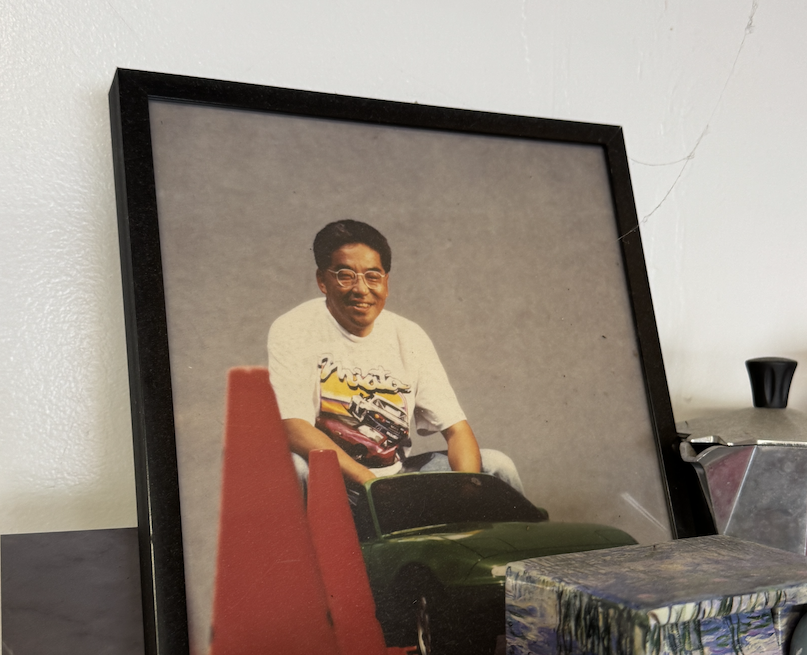
One of my favorite Tom quotes, from another document called “Inspired Sensations,” was a blueprint for the Miata’s product strategy. It said: “The customer takes the car home, and, of course, takes the family for a ride, shows it to their neighbors and friends. Just before retiring to bed, you stop for one last look, and say ‘goodnight’ to the car, or maybe even sit in the car one last time.”
Tom will always be known for his career achievements and contributions to the automotive industry, and I’m sure you’ll hear a lot about that in the coming days and weeks. But Tom was so much more than his automotive talents, so I want to tell you some of the beautiful things I learned about him in our year of friendship.
Lasting Impressions
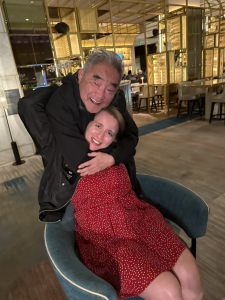
The first night I met Tom, I was wearing a bright-turquoise vintage jacket from Leyton House, a Formula One sponsor and team from the 1980s and ‘90s. The Leyton House racing brand failed spectacularly when its boss, Akira Akagi, got arrested in connection with “questionable loans” from Japan’s Fuji Bank circa 1991.
Tom couldn’t believe I knew what Leyton House was, let alone the details of its failures. We spent the rest of the night sitting at a table on a sidewalk, eating ice cream and bonding over our similarities. Tom told me he liked a specific wristwatch so much, he bought a ton of them in case one broke. I told him I liked my 17-year-old shoes so much, I’ve glued them back together at least 10 times. We bonded over how we go to restaurants and order the same dish again and again, because we know what we like. We laughed all night.
Later that weekend, I saw Tom at a fancy car show, where he wore his usual outfit for those outings: a nice coat and a tie with Miatas all over it. He hugged me with a big grin and even bigger squeeze. That big squeeze was a Tom staple, communicating his love and joy to see people better than words ever could.
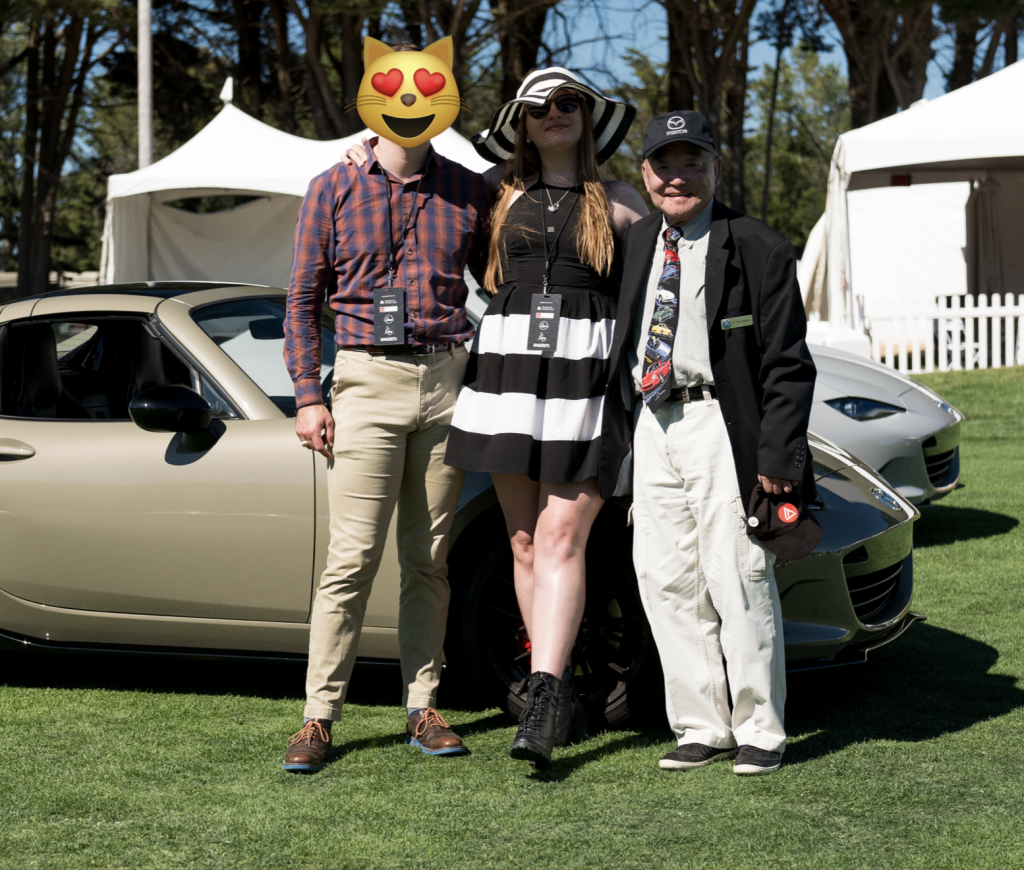
We exchanged contact information, as people often do, but I didn’t expect to hear from Tom so often or so quickly. He was a big deal, after all — a famous designer with an assistant and adoring fans. I was one (loud and silly) woman in a sea of people.
But Tom had a fierce desire to connect with people and to love them. That weekend, he sent me an email titled “For your flight home” that contained his original planning documents for the Miata (part of which is quoted above). And from that point forward, he sent me every object, car, or photo he saw with Leyton House turquoise in it, so we could decide if it was “Leyton House” enough. He’d caption the texts:
“Too green, but pretty.”
“A little blue.”
“Very close.”
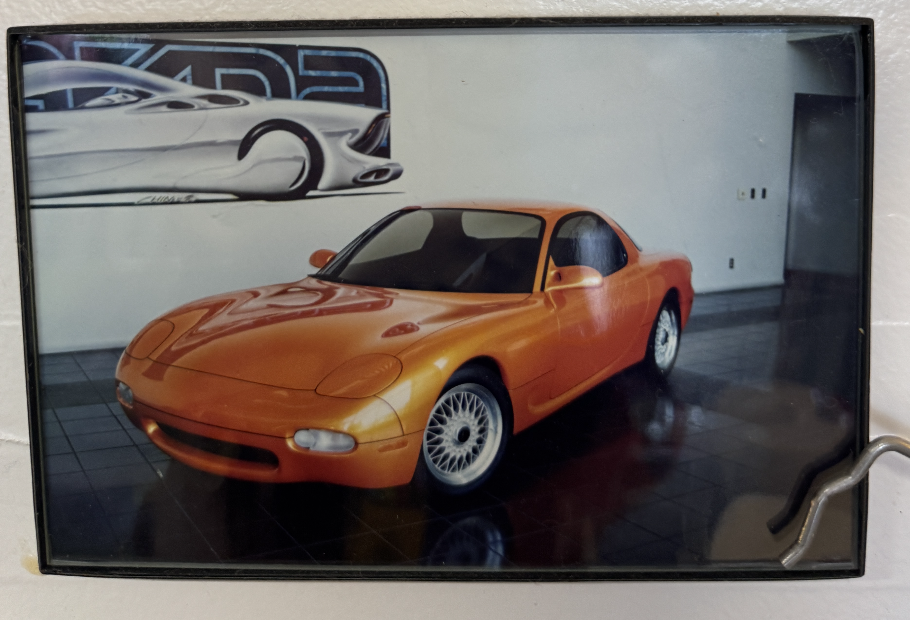
Tom and I talked about everything. He strongly believed that cars should make you look back at them after you park, due to their design and their sentimentality. A few weeks ago, I sent him a photo of my Miata to tell him I always look back at it.
“Lasting impressions,” he said.
“Always,” I responded.
Knowing Cars Means Knowing People
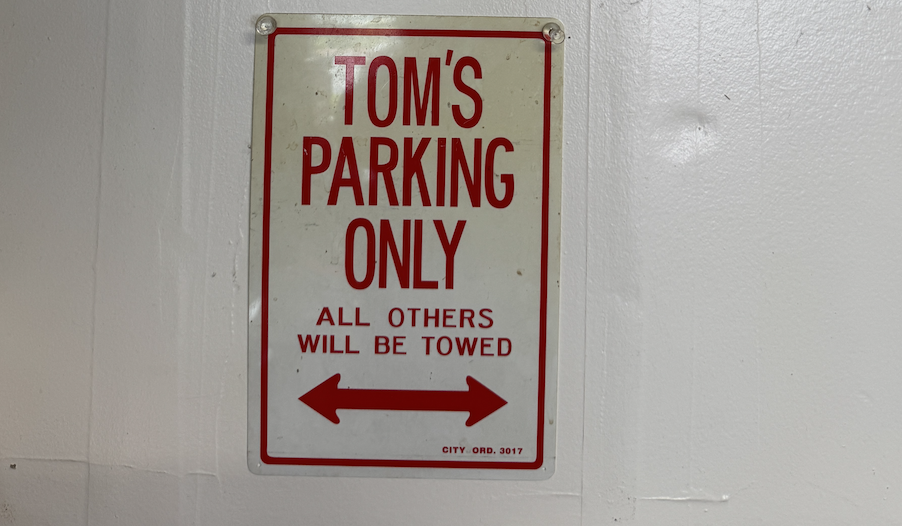
Tom had an incredible ability to study people and society, then turn those studies into automotive design and product planning. His studies of American culture — how we’re an individualistic society but form friend groups through hobbies, clubs, and shared interests, like car models — were the basis of his strategy for the Miata. His 1986 Miata Concept document planned the Miata’s exact trajectory from debut through the year 1999 (and he sent me the shortened version!). All of Tom’s years-out predictions and plans for the car, including how it would be seen from a market and sentimental perspective, were exactly right. He knew his car and his audience better than most people know themselves.
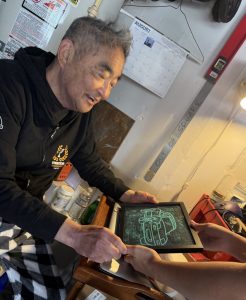 Tom kept meticulous documentation of his life, digitally scanning and archiving everything from childhood and young-adulthood photos to an old paper letter he received as blackmail from a guy claiming to be the “true designer of the Miata.” Tom once showed me a pre-smartphone photo he took on a digital camera, which was him in a mirror with a plank of wood strapped to his back because he injured it. He loved simple solutions — in this case, forced spinal posture by 2×4 — and he told me: “That was the best night of sleep I ever got.”
Tom kept meticulous documentation of his life, digitally scanning and archiving everything from childhood and young-adulthood photos to an old paper letter he received as blackmail from a guy claiming to be the “true designer of the Miata.” Tom once showed me a pre-smartphone photo he took on a digital camera, which was him in a mirror with a plank of wood strapped to his back because he injured it. He loved simple solutions — in this case, forced spinal posture by 2×4 — and he told me: “That was the best night of sleep I ever got.”
Tom was mischievous, always plotting little jokes and harmless pranks. One time, when we were snacking at the bar of a nice hotel with some friends, Tom told us about the time he got personally invited to the White House. He wanted souvenirs for loved ones, and when he went to the bathroom, he noticed the disposable hand towels had fancy presidential seals on them. He grabbed the whole stack and stuffed them in his pocket, then went back later that day when the staff restocked them and did it again.

After Tom told this story, he got up and walked away. I figured it was a bathroom break he forgot to announce. He came back a few minutes later with a giant stack of fancy disposable hand towels from the hotel bathroom, passing them out and putting a final punchline on his story. We all signed a towel, and I took it home.
My Last Visit With Tom
Tom loved plotting things like that. But if you plotted things back — like when I flew to California a few weeks ago to surprise him with gifts and company — he’d point at you and scrunch his face with a little smile, shocked but secretly thrilled you got away with the same mischief he loved to pull.

Tom loved Italian food and bread. He had a better memory of the 1980s than I do of last week. He liked to read the first few chapters of a murder-mystery novel, guess the killer, skip to the end and see if he was right, then finish reading the book to see how the author dropped hints about the guilty party.
He signed everything with “Always Inspired – T. Matano,” and he was, truly, always inspired. He always joked about the quality of his English writing, but I told him there was no need to joke because his writing was beautiful. I meant it. He loved Hallmark movies, no matter how bad they were, because they gave him a nice happy cry at the end. When I told him I was looking at a Leyton House-themed kei truck in Japan once, he told me to call him if I bought it, and he’d park it at his house there until he could connect me with someone to import it. When he would hang up the phone, despite knowing me for such a short time, he’d say: “Okay, love you, bye!” Even if he felt ill or unwell, you couldn’t tell, because he was always so happy and positive. When I visited Tom last, he’d set up his laptop and desk in the garage so he could be with his Miata all day.
Tom loved the Miata, and the Miata was where he wanted to be — so that’s where we spent the day. It meant the world. He showed me photos from the time he grew his hair out in his 20s, and he said that as soon as he saw his grandmother, she couldn’t believe the sight of him and gave him money to get it cut. I told him he looked very California surfer, and I liked it.

Tom meant so much to me. We met when I was 28 and he was 76, and we formed one of the best relationships I will ever have, all because of his fierce pursuit of love and friendship. Tom spent his life and career surrounded by the coolest people in the world, including himself, yet he still put in so much effort to get to know me. He was one of the most special people I will ever know, and I’ll miss him for the rest of my life.
Tom loved life. He loved people. He loved teaching his skills. He loved cars. And he loved his Miata. If I can tell you to do one thing, it’s this: Live your life as if it’s short, because it is. Find peace and joy every day. Call people and tell them you love them, even if you haven’t known them very long. Fiercely pursue happiness and relationships and the things that bring you a sense of purpose. And please, enjoy your cars. Put the top down if you can. One day, whether it’s sooner or later, you won’t have the ability to drive them anymore. That’s sad, but it’s also a reminder of how happy they make you. Do this with everything and everyone you love.
Grief is love, and I loved Tom. I always will. I hope I can love people as well as he loved me.
Thank you for listening, and I hope you remain Always Inspired. Tom would want that.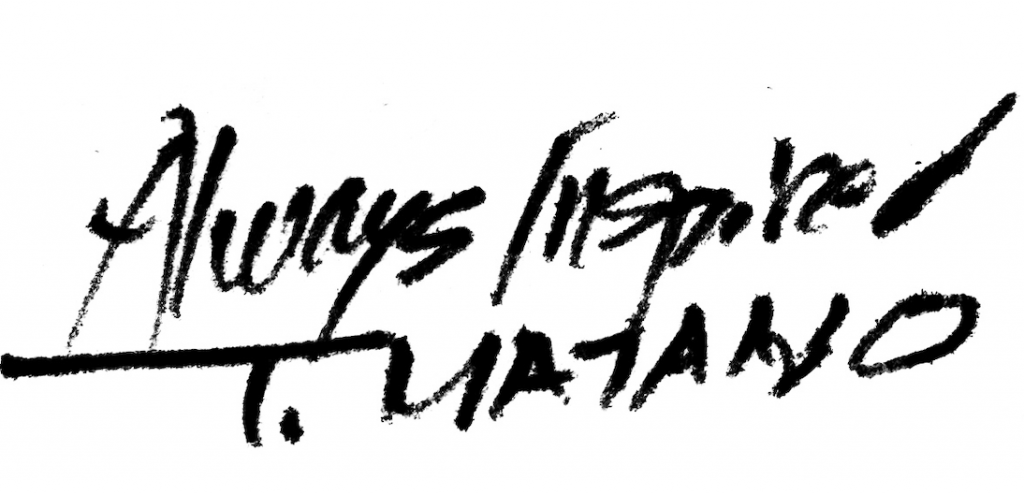





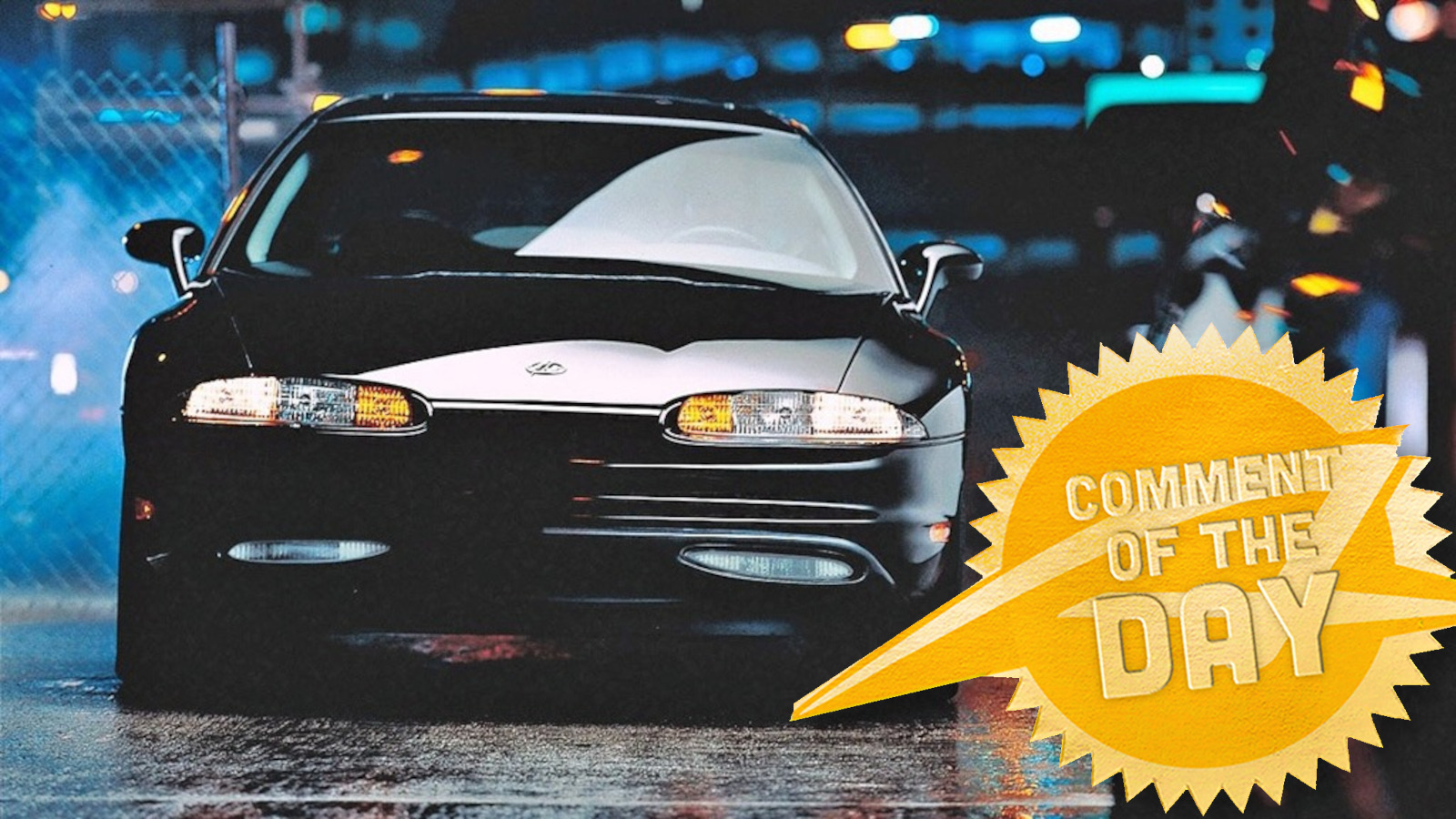
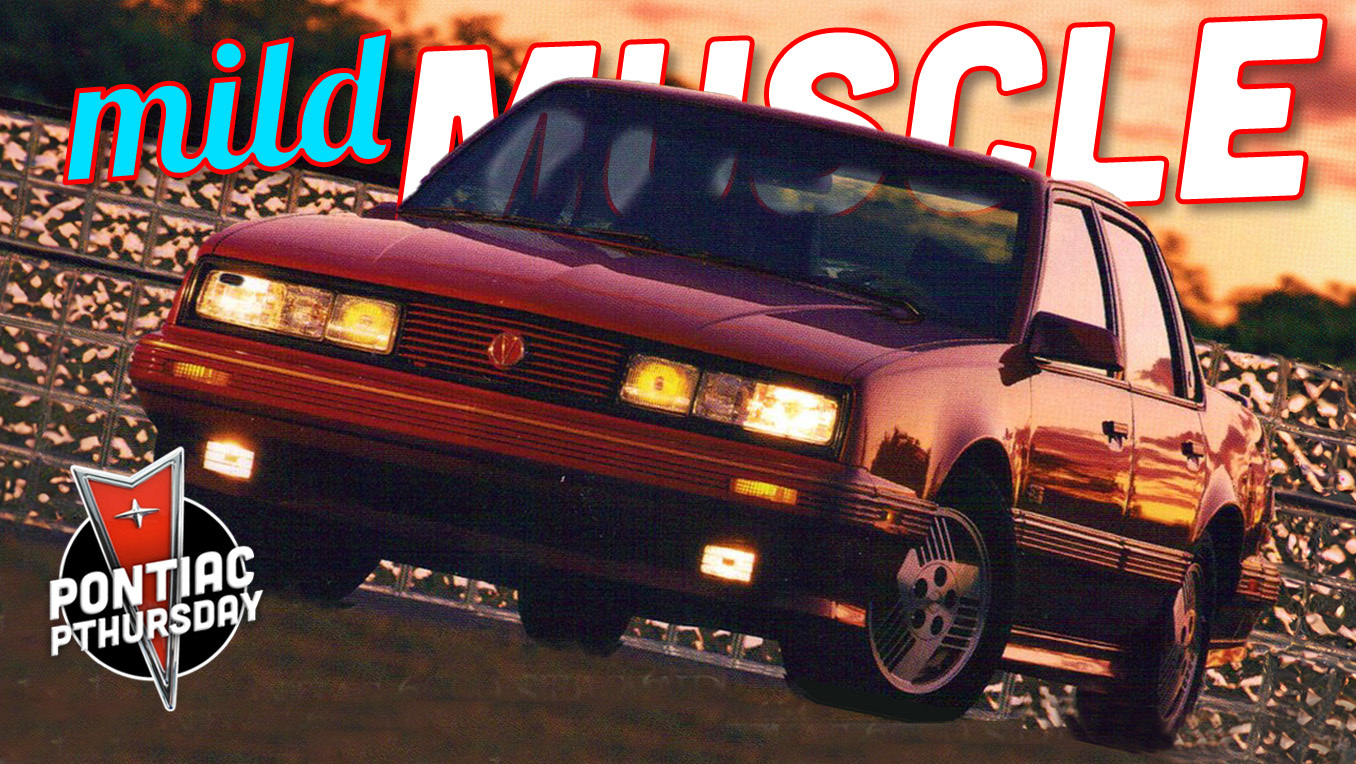

Thank you for this! I had to read it in several parts so people wouldn’t ask why i was crying at work!
<3
A really wonderful tribute, Alanis. Thanks for sharing a little bit of your friendship with Tom with all of us.
Alanis – that was such a wonderful tribute to Tom, thank you for sharing. I am lucky enough to call Tom a friend and mentor; though I regretfully didn’t visit as much as I would have liked over the last 15 years since I graduated. I’m so glad that you and Tom had each other in your lives, I’m sure your friendship brought him so much joy and happiness.
<3 Thank you for your friendship with him
What a beautiful tribute to Tom, he sure sounded like an amazing friend, beyond his contribution to the automotive world. Thank you for sharing with us and sorry for the loss of your friend.
This is an absolutely beautiful homage to your friend. What a wonderful person he must have been to know and love. Thank you for sharing this with all of us.
Man Alanis, this read really pulled at the heart strings. You can tell how much he meant to you on a personal level. As a community, we can’t thank him enough. While I am currently Miata-less, not a day goes by that I don’t miss mine or want another.
HIs comments about how he viewed the future are spot on. What a visionary. I am pouring one out and RIP Tom
Heart wrenchingly wonderful article, Alanis. I’m glad you had this friendship with Tom, and I’m sorry it came to an untimely close.
Thank you Alanis, this was so well written, I almost feel like I met Tom Matano. Certainly will mourn his passing.
Oh what a wonderful article, thank you. I only wish that Tom had been a bit larger, so that I fit into Miatas
Alanis, thank you for reminding us of the treasure of people like Tom Matano who understand what a car should be. Losing one is an immense loss.
Wow, who would have thought I would have something in common with such a prominent designer? You know you’ve found a true car enthusiast when they understand about looking back after you’ve parked. Thank you for sharing this, Alanis…you were so fortunate to have formed a friendship with Tom.
Alanis, you’re so lucky to have been able to get to know Tom. 🙂
Huh, you can send onions through the Internet now? No other way to explain this.
Sounds like a great man.
Thanks for this Alanis. Beautifully written.
I have three of his legacies in my driveway and garage now. A 91 NA, 99 NB, and 04 Mazdaspeed. I had always hoped to somehow meet him, although being on the exact opposite coast I knew it was unlikely.
Tom Matano is the last of a breed. Nobody knows who truly designs the cars we go to so much trouble to get and keep, but we all know who Zora Arkus-Duntov, Bill Mitchell, Jack Telnack, J Mays, and Frank Stephenson are. That moment in our automotive history is passing.
Ok, wow….his Miata Concept doc basically was a 100% accurate trajectory for the Miata. Tell me another creator that nailed their vision so perfectly that you just read their early thoughts and nod in agreement. Seriously, no one has made a more accurate and articulate description of a vision, car or otherwise, then proceeded to check the boxes perfectly.
I could go on….that just amazes me…..
And after racing down to comment, I now reach the point in the article where Alanis basically says the same thing. Ha!
A hell of a tribute to a man who I frankly think was overlooked, at least in the US. Wonderful piece, Alanis. I always enjoy your work here and on YouTube!
<3
That’s a beautiful tribute, Alanis. Tom clearly had a way of connecting with people, which in many ways is far more important than anything else we can do in life.
Great article and well-written.
Goodness, I was not expecting to get punched in the feelings this early in the day.
Stellar article. I’m feeling a pang of loss for a man I barely knew existed until now. He sounds like a very warm and kind soul who saw the best in people – even seeing the best in a country which devastated Mazda’s own hometown of Hiroshima a scant few years before his birth.
I hope we can be the kind of people that Tom saw us as: individualistic, but capable of great warmth and community, bonding over mutal loved hobbies.
Finally, “Grief is love” is a wonderful line and I don’t know if it’s an Alanis original but it’s what pushed me into tearing up at the end there. Our love for someone is mirrored in the grief we feel when they are gone.
<3 thank you
Wow. Beautiful. Thank you for sharing.
Really moving tribute, thank you for sharing all these wonderful memories.
My first car was a blue NB. I learned how to drive on it and kept it well into my 30s, long after it made sense to.
I’ve owned “better” and faster cars since, but I don’t think I’ll ever have that emotional bond to another car. Mostly because that car took me through my formative years, but also because Miatas are so damn good.
I was never lucky enough to meet Tom, but his creation was the object I’ve loved more than any. May he rest in peace.
Fantastic article. It reminded me of articles from the heyday of Automobile Magazine. Thank you for sharing.